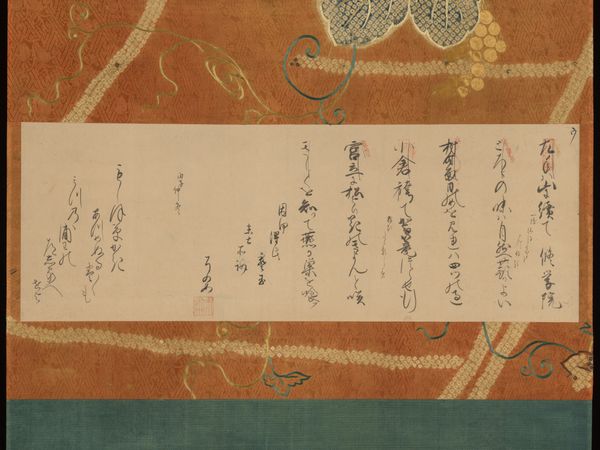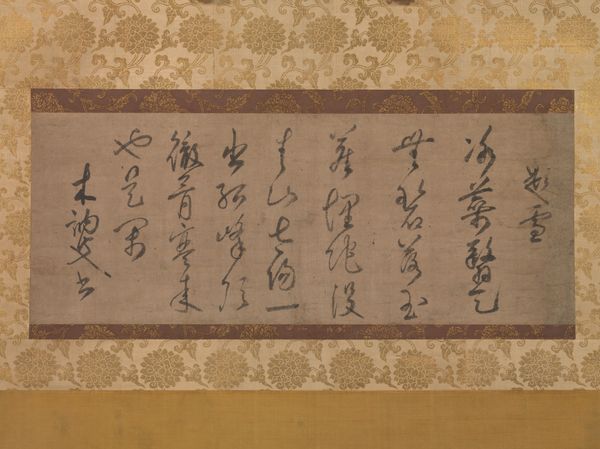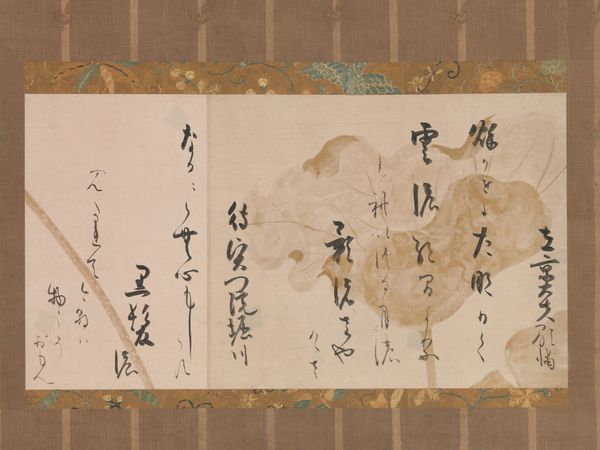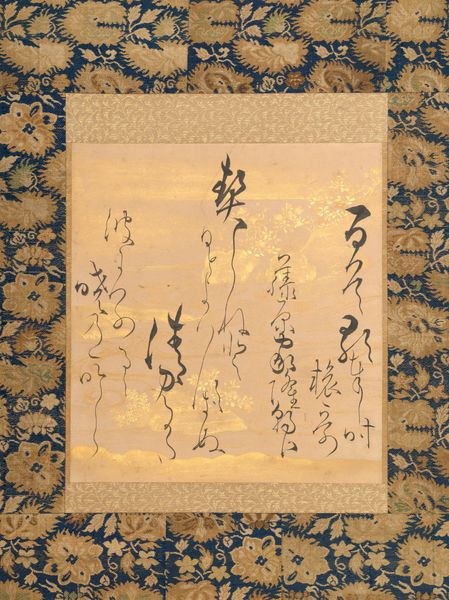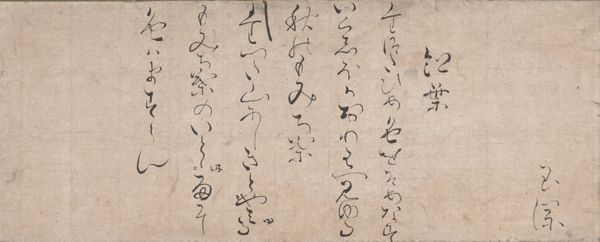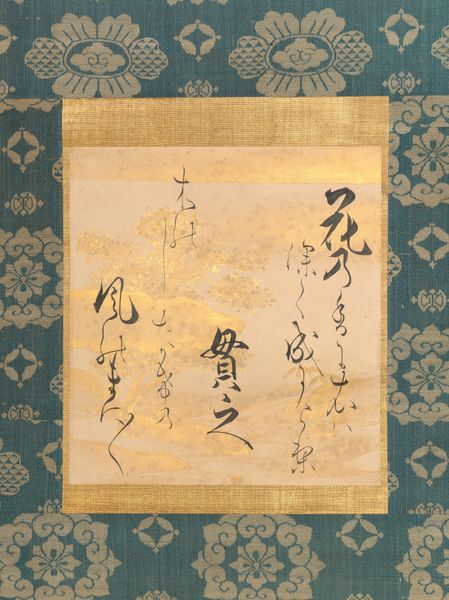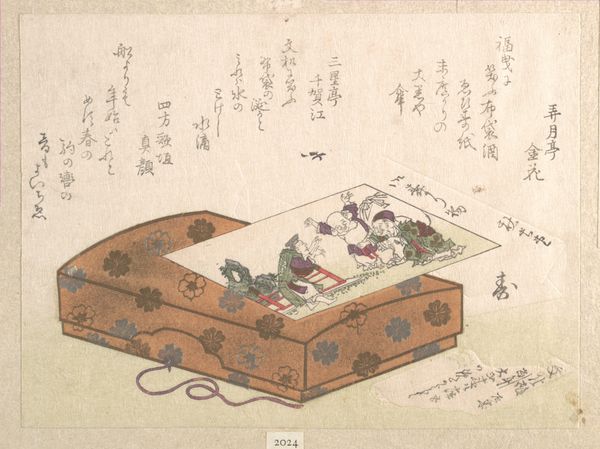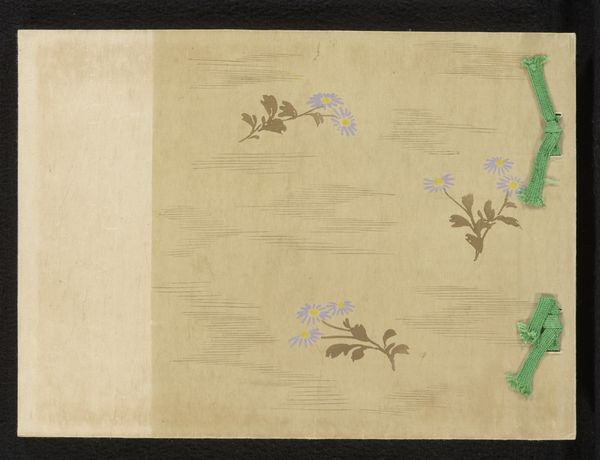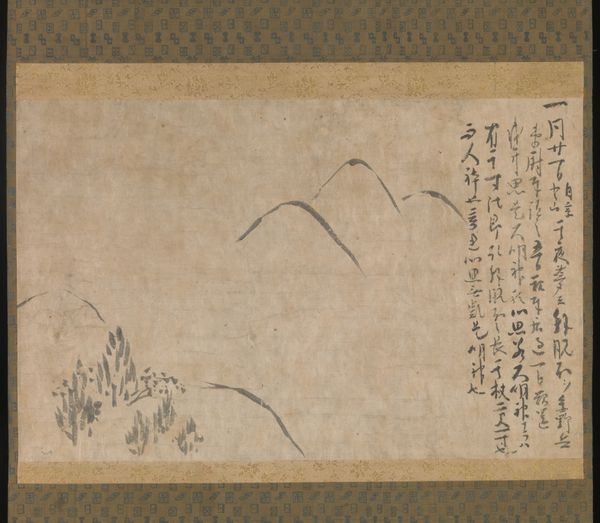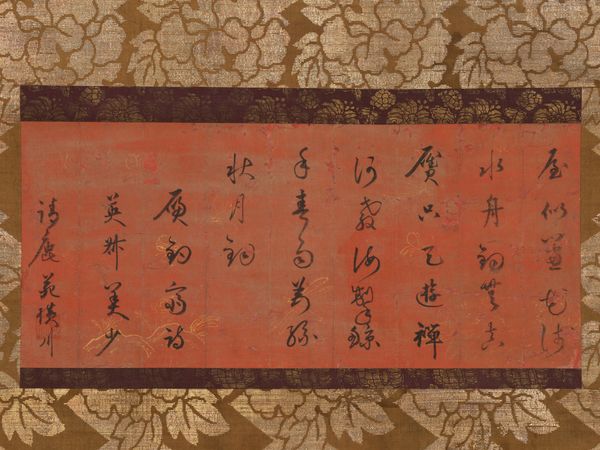
Chinese Couplet by Bai Juyi and Waka by Fujiwara no Toshiyuki (partial) from “Japanese and Chinese Poems to Sing” (Wakan rōeishū) 1567 - 1633
0:00
0:00
drawing, paper, watercolor, ink
#
drawing
#
asian-art
#
paper
#
watercolor
#
ink
#
orientalism
#
watercolor
#
calligraphy
Dimensions: Image: 13 1/8 × 18 5/8 in. (33.3 × 47.3 cm) Overall with mounting: 48 3/8 × 23 1/2 in. (122.9 × 59.7 cm) Overall with knobs: 48 3/8 × 25 3/4 in. (122.9 × 65.4 cm)
Copyright: Public Domain
This hanging scroll features Chinese and Japanese poems, and was created by Konoe Sakihisa in the late 16th or early 17th century. Konoe was a member of the aristocratic elite, living in a period of intense social and political upheaval. His identity afforded him the cultural capital to engage with both classical Chinese and Japanese poetic traditions, blending them in a single work. This piece reflects the cultural exchanges and the artistic dialogues that occurred within the Japanese elite. The selection of poems and the calligraphic style speak to the artist's education, social standing, and aesthetic sensibilities. It’s fascinating how the artist weaves together different cultural and linguistic traditions. Calligraphy, like many art forms, can be an expression of personal identity, a display of cultural affiliation, and a reflection on the world. This piece invites us to reflect on the historical context in which identities are formed.
Comments
No comments
Be the first to comment and join the conversation on the ultimate creative platform.

